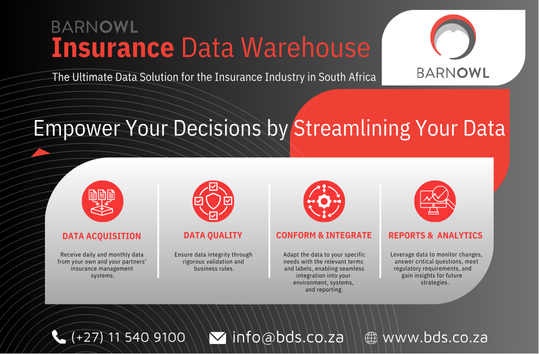Angus Black, Director, BarnOwl Data Solutions (BDS)

I have experienced firsthand how essential data has become in the insurance industry. Over the past 16 years, Barnowl has grown significantly, and the variety of people and teams we work with has expanded as well.
Initially, we focused primarily on the financial side of things—helping companies understand their policies, the risks they had on cover, and premium amounts. But as the insurance landscape has evolved, so too have the demands placed on data. Today, we support a wide range of teams, each with distinct needs and priorities.
Multiple use cases
One of the most interesting aspects of working with data is seeing how different teams within the same organisation use it in completely different ways. Early on, our primary clients were finance teams. They relied on the data to audit processes, ensuring that there was consistency between the bordereaux data and the policies. It was all about making sure the numbers added up. Today, underwriting and actuarial teams are also major users of our data, using it to assess premiums, calculate solvency, and model reinsurance structures. The accuracy and granularity of the data are critical in their work, especially when it comes to managing risk.
Another area that has become increasingly important is compliance and regulatory reporting. As the industry has become more regulated, compliance teams have had to become even more data driven. Whether it is for internal audits or external regulatory reporting, ensuring the accuracy of data is crucial. We have also seen more involvement from broker relationship managers, who use our data to engage with brokers and ensure that everyone is aligned. Claims and fraud detection teams also rely heavily on the data, particularly when they need to assess claims during major catastrophes or investigate potential fraud cases.

Empower Your Decisions by Streamlining Your Data
With BARNOWL Insurance Data Warehouse: The Ultimate Data Solution for the Insurance Industry in South Africa.
For more information on how to empower your decisions by streamlining your data, visit bds.co.za
Evolving trends
What makes this landscape so exciting is that it is constantly changing. The needs of these different teams evolve over time, and we must be prepared to keep up. One way we do this is by maintaining strong relationships with our customers. Often, they give us a heads-up about upcoming regulatory changes, which allows us to prepare in advance. We then engage with the relevant source systems to ensure that the data needed to meet these new regulations is available. If the data isn’t already in place, we work with these systems to include it in future updates.
Internally, we have several tools and processes to ensure we are delivering the highest quality data possible. For example, we have implemented automated validations and checks that run on every data set we process. These checks help us catch any errors early, and we also perform reasonability checks to identify any large variances in the data from month to month. Data mapping is another critical part of our process, as it allows us to standardise data across different systems, ensuring that everything is clean and consistent.
Increased value added
At BDS, we do not just stop at providing data. We are always looking for ways to add value beyond the core service. I believe we do this through four key pillars: automation, analytics, integration, and reducing manual capture. Automating processes like syncing policies or capturing bordereaux data not only improves data quality but also reduces manual errors, saving our clients both time and effort. We also provide deep, granular insights through our analytics tools. These tools give our clients access to detailed data right down to individual policy items, which can be incredibly useful for assessing performance and making informed decisions.
Integration is another area where we add value. We have built integrations that allow insurance companies to improve their data quality and streamline their processes. For example, by integrating with their systems, we can automate the collection and validation of data, ensuring that it is accurate and readily available. This has been especially helpful for policyholders, as it ensures that their policy data is always up to date and available to insurers when needed at claim time.
Lastly, we work closely with brokers to make their lives easier. Collecting data can be a time-consuming and error-prone process, but by automating much of that work, we can reduce the reporting burden on brokers. This allows them to focus on more strategic tasks, like engaging with insurers and providing better service to their clients. The result is a more consistent and reliable flow of data, which is essential for building trust between brokers and insurers.
The value of data in the insurance industry can’t be overstated. I have often heard people describe data as “the new oil,” and that is certainly proven true. Once you start digging into it and using it effectively, you realise just how much a business pivots around data—how it is managed, how it is used, and the insights that can be drawn from it. It touches every part of the business, from financial audits to risk management, and even customer relationships. I hope that more people, particularly brokers, begin to see the value in the data they have at their fingertips.
At BDS, we are constantly pushing the boundaries of what is possible with data, and I am excited to see where the future takes us. We are already working on some innovative new solutions, and I believe the future of data in insurance will be even more integrated and impactful.

